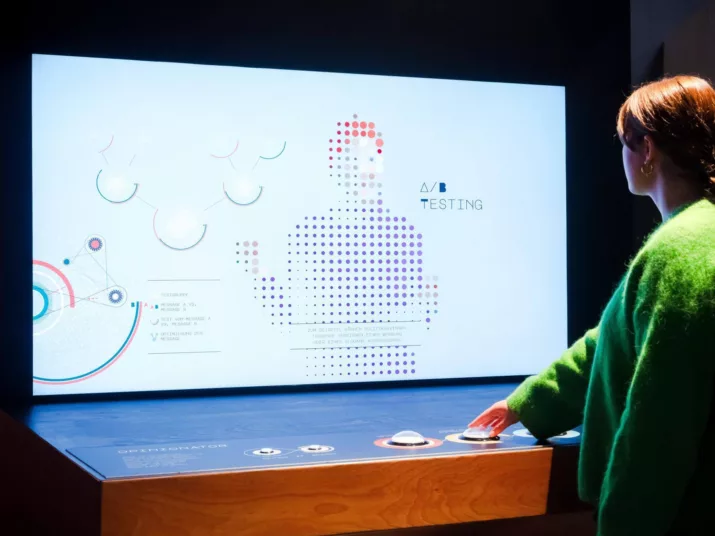
How can we influence opinions?
Opinionator
Have you already liked a YouTube video, shared a post on Instagram, or left a comment on TikTok today? What kind of posts grab your attention? Which channels do you spend most of your time on? And which website do you leave immediately?
Our lives are increasingly shifting to the Internet. This also affects the processes of forming political opinions, which serve as the foundation for us, as citizens, to make democratic decisions.
Photo: David von Becker
Political parties and interest groups have long been using the Internet to disseminate information or even to deliberately influence your opinion. It is not about advertising the best delivery service or the latest dance video. Rather, it is about the big social questions that determine our future: For instance, your thoughts about climate change or which candidates you might consider voting for in the next election.
Making the invisible visible
The “Opinionator” exhibit by Tactical Techreveals the methods that can be used to influence political opinion formation on the Internet.
The internationally active NGO is committed to promoting a democratic and sustainable digital future. The Opinionator is an avatar that introduces you to three widely used influencing tools: Social Listening, Geotargeting and A/B testing.
Through social listening, companies and organizations attempt to understand the overall sentiment surrounding a particular topic or product. This involves the use of a software program that analyzes posts on social media platforms for relevant information. The content is collected, categorized and filtered across platforms. One example for social listening is the rebranding of the Berlin-based company BVG. The method allowed them to gain insights on the preferences of their target audience. The results prompted the company to adopt a new approach to addressing their customers. Consequently, BVG created advertising slogans in the distinctive "Berliner Schnauze" (a Berlin dialect known for its rough humor and unblemished directness) and developed a clear reference to Berlin locations in its visual language.
Geotargeting refers to the practice of targeting users based on their location. For instance, by knowing where a person is at a given moment they could be enticed into a nearby store via notification. Political parties can use this technology to spread political messages tailored to specific districts and neighborhoods. The Facebook campaigns of German parties during the European elections are one example of how the method was used.